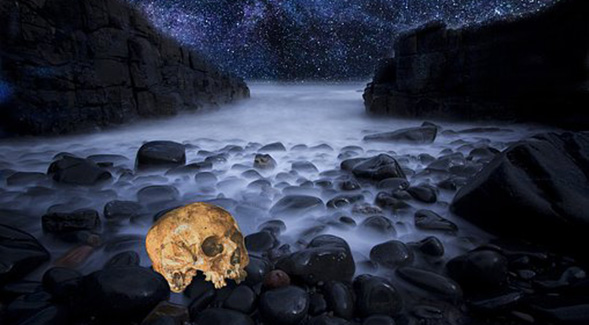A Course to Confront Evil
A new Religious Studies/Humanities class shows students differing concepts of evil through the ages, and then challenges them to do something about it.

With San Diego State University President Adela de la Torre driving major institutional initiatives in support of student, faculty and staff development, and with ambitious plans for future growth, SDSU opens 2019 with increased momentum toward an expanded community impact.“These are topics that I hope students are grappling with in the modern world as we confront the fact that there’s very real suffering going on around us.”
"Directions: SDSU in 2019" is a series highlighting top stories related to university research, student success and innovative programs and provides a forward-looking lens into the work of students, faculty and staff.
A big step in understanding evil, as the 144 students in Angela Feres’ new class on the subject have already found out, is realizing there’s no single, tidy way to describe it.
Their first assignment was to come up with a definition of evil, and Feres expects 144 different responses.
“That definition shifts depending on who’s answering, depending on what time period,” said Feres, a San Diego State University lecturer. “Philosophers say one thing, theologians may say another. Different religions have different understandings.”
Understanding Evil (Religious Studies/Humanities 411) is one of about a dozen new courses introduced in SDSU’s spring 2019 semester, including classes on Japanese culture, media in Latin America and condensed matter physics.
In addition to drawing students from the religious studies and humanities departments, the course has attracted others majoring in psychology, business and political science.
Feres’ three-unit course will explore concepts of evil from some of the oldest religious traditions of India, Mesopotamia and Egypt, and their influence on later Jewish, Christian and Islamic concepts. Long ago, some believed suffering was inflicted by gods and goddesses who were unhappy with the way their subjects performed rituals. In other cultures, evil was just a part of life, “something that teaches you a lesson,” Feres said.
Demons and devils
Representations of demons and devils over time are part of the curriculum, and Feres said students expressed an interest in discussing the beliefs of people who claim to have experienced supernatural evil. Genocide and other mass atrocities certainly qualify as evil, and so do racism, slavery, human trafficking and mass shootings.
“We’ll talk about people who believe that they have a real experience with demonic figures but a lot of the class is more of an understanding of how and why we label people as evil and the consequences of that,” Feres said.
She plans to bring in a Catholic priest to talk about ritual exorcism and its uses in modern times, which bear little resemblance to their depiction in movies. Other guest speakers will discuss terrorism and religious violence, and how evil can exist under an all-powerful, all-loving God.
“People suffer, and it’s often innocent people,” she said. “It raises the question of why.”
Evil in the modern age
Feres is a double SDSU alumna with a bachelor’s degree in religious studies and a master’s in history with an emphasis in medieval studies. She holds a dual Ph.D./M.A. in early modern studies and the history of Christianity from Claremont Graduate University.
Why study evil in 2019? “It’s so meaningful when we have people still being targeted because of their race or their gender, their religion or their ethnicity,” Feres said.
“These are topics that I hope students are grappling with in the modern world as we confront the fact that there’s very real suffering going on around us.”
And that leads to the hard part: how to combat evil. “That is what we’re going to devote our very last few classes of the semester to,” said Feres. “Help. Be part of the solution. We’ll see what they say.”
It may be something as simple as becoming more active in politics, getting involved in the community, or helping to teach.
“That’s the neat thing about university students—they’re full of thoughts,” Feres said. “And if you don’t tell them that any of them are wrong, you might just stumble across some real brilliance.”



